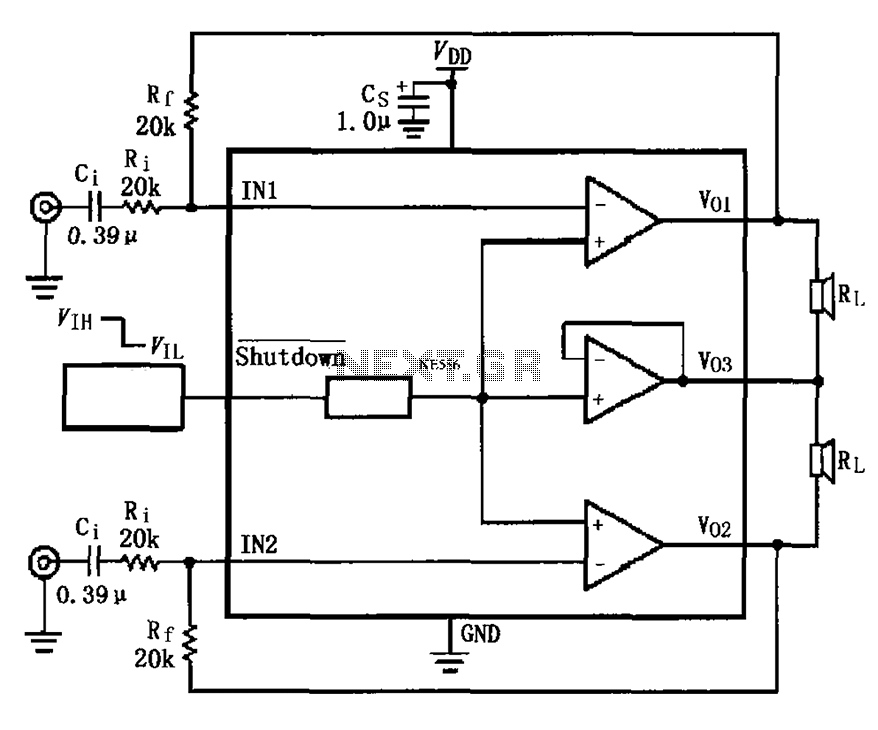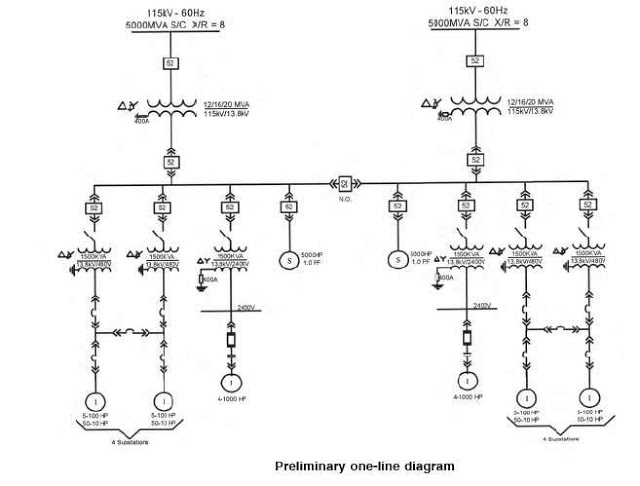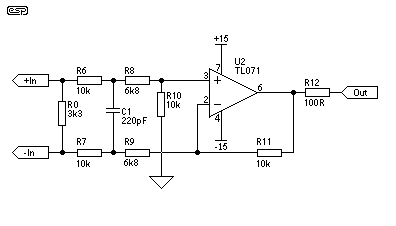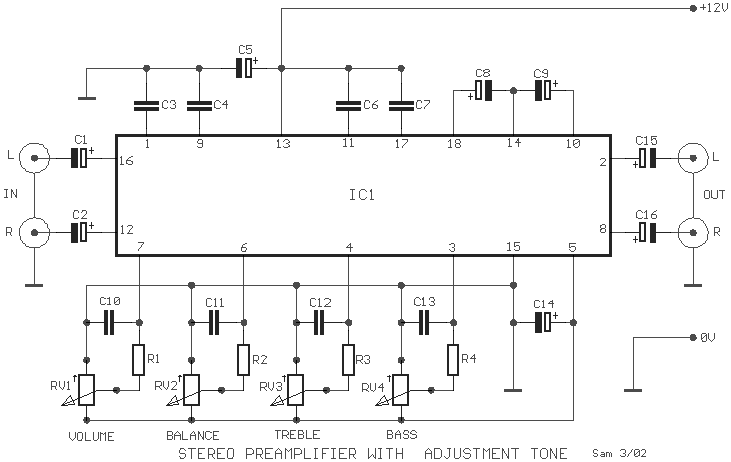
Dual Input-Combining Stereo Line Amplifier
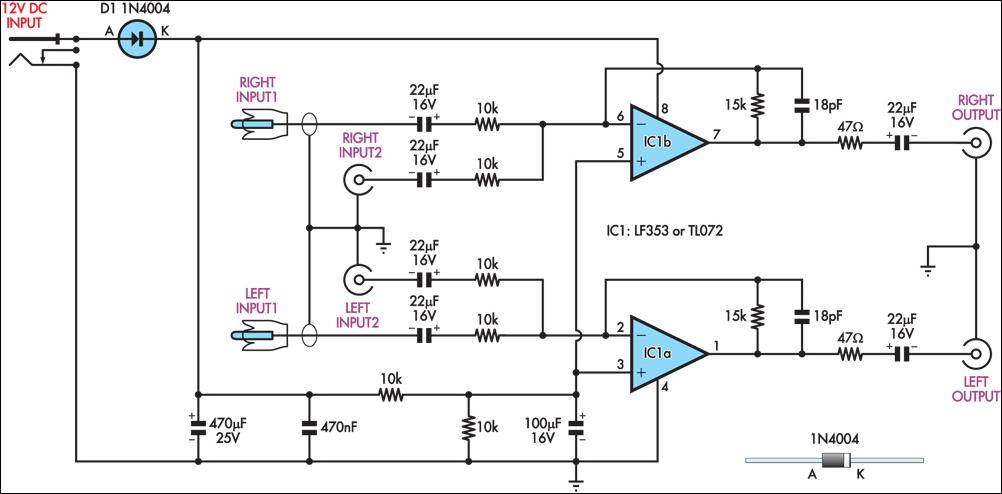
This circuit combines two separate line-level stereo (left and right) signals into a single stereo output, eliminating the need to switch between two sets of input signals. In this application, it is utilized to connect stereo audio from a TV receiver and a DVD player to an external amplifier. The necessity for this circuit arose due to a unique design feature in the TV receiver. The TV is equipped with four A/V inputs and one A/V output. Inputs AV1 to AV3 accept composite or S-video along with stereo audio, which are routed to the TV's A/V output. Input AV4 accepts component video (Y/Pb/Pr) and stereo audio; however, unlike AV1 to AV3, the audio and video signals from AV4 are not sent to the TV A/V output. The component video input was selected for the DVD player due to its superior video quality, while the audio is directed to an external amplifier for enhanced sound reproduction. Manual switching was deemed inconvenient, leading to the development of this circuit. In operation, the audio from the DVD player is connected in parallel to the TV's AV4 input and one input pair of the combining amplifier, while the TV audio output is connected to the other input pair. The output from the amplifier is sent to the external audio amplifier. There is no conflict between the two audio inputs because when AV4 (DVD player) is active, the TV audio output is inactive. In all other modes, the DVD player remains off. The circuit is designed with a voltage gain of 1.5 times (3.5 dB), which can be adjusted by modifying the two 15 kΩ resistors. The input impedance is 10 kΩ, and the outputs are isolated from cable and amplifier input capacitance using 47 Ω series resistors. The circuit can be powered by a regulated 12V DC power supply.
This circuit serves as an effective solution for integrating audio signals from multiple sources into a single output without the hassle of manual switching. The design incorporates a combining amplifier that merges the audio signals from the TV and the DVD player seamlessly. The choice of using component video for the DVD player ensures that the video quality is maintained at a high standard, while the audio output remains flexible for amplification.
The use of 15 kΩ resistors for gain control allows for customization based on the specific requirements of the audio system in use, enabling adjustments to the output level as necessary. The input impedance of 10 kΩ is suitable for most line-level audio sources, ensuring compatibility with a wide range of equipment.
The isolation provided by the 47 Ω series resistors is crucial in preventing any unwanted interaction between the outputs and the input capacitance of the connected amplifiers or cables, thereby preserving audio quality. The circuit's power requirements are modest, allowing it to be powered by a common 12V DC plugpack, making it convenient for various applications.
Overall, this circuit design not only simplifies the audio management between multiple devices but also enhances the overall audio experience by ensuring that high-quality signals are delivered to the external amplifier without conflicts or quality loss.This circuit takes two separate line-level stereo (L & R) signals and combines them into one stereo (L & R) output, thus avoiding the need to switch between two pairs of input signals. In the author`s application, it is used to feed the stereo audio from a TV receiver and a DVD player into an external amplifier.
The need for the circuit arose beca use of a design peculiarity in the TV receiver. The TV has four A/V inputs and one A/V output. AV1-AV3 accept composite or S-video plus stereo audio inputs and these feed into the TV`s A/V output. AV4 accepts Component video (Y/Pb/Pr) plus stereo audio but unlike AV1-AV3, its audio (and video) signals are not fed to the TV A/V output.
The Y/Pb/Pr input was chosen for use with the DVD player because of its superior video quality, while the audio was to be fed to an external amplifier for improved reproduction. However, manual switching was inconvenient, hence the genesis of this design. In use, the DVD player audio is fed in parallel to TV AV4 and to one input pair of the combining amplifier, while the TV audio output feeds the other input pair.
The amplifier output goes to the external audio amplifier. There is no conflict between the two audio inputs because when AV4 (DVD player) is selected, there is no TV audio output. In all other modes, the DVD player is off. As shown, the circuit has a voltage gain of 1. 5 times (3. 5dB) but this can be altered as required by changing the two 15kW resistors. Input impedance is 10kW and the outputs are isolated from cable and amplifier input capacitance with 47W series resistors.
The circuit can be powered from a regulated 12V DC plugpack. Be the first of your friends to get free diy electronics projects, circuits diagrams, hacks, mods, gadgets & gizmo automatically each time we publish. Your email address & privacy are safe with us ! 🔗 External reference
This circuit serves as an effective solution for integrating audio signals from multiple sources into a single output without the hassle of manual switching. The design incorporates a combining amplifier that merges the audio signals from the TV and the DVD player seamlessly. The choice of using component video for the DVD player ensures that the video quality is maintained at a high standard, while the audio output remains flexible for amplification.
The use of 15 kΩ resistors for gain control allows for customization based on the specific requirements of the audio system in use, enabling adjustments to the output level as necessary. The input impedance of 10 kΩ is suitable for most line-level audio sources, ensuring compatibility with a wide range of equipment.
The isolation provided by the 47 Ω series resistors is crucial in preventing any unwanted interaction between the outputs and the input capacitance of the connected amplifiers or cables, thereby preserving audio quality. The circuit's power requirements are modest, allowing it to be powered by a common 12V DC plugpack, making it convenient for various applications.
Overall, this circuit design not only simplifies the audio management between multiple devices but also enhances the overall audio experience by ensuring that high-quality signals are delivered to the external amplifier without conflicts or quality loss.This circuit takes two separate line-level stereo (L & R) signals and combines them into one stereo (L & R) output, thus avoiding the need to switch between two pairs of input signals. In the author`s application, it is used to feed the stereo audio from a TV receiver and a DVD player into an external amplifier.
The need for the circuit arose beca use of a design peculiarity in the TV receiver. The TV has four A/V inputs and one A/V output. AV1-AV3 accept composite or S-video plus stereo audio inputs and these feed into the TV`s A/V output. AV4 accepts Component video (Y/Pb/Pr) plus stereo audio but unlike AV1-AV3, its audio (and video) signals are not fed to the TV A/V output.
The Y/Pb/Pr input was chosen for use with the DVD player because of its superior video quality, while the audio was to be fed to an external amplifier for improved reproduction. However, manual switching was inconvenient, hence the genesis of this design. In use, the DVD player audio is fed in parallel to TV AV4 and to one input pair of the combining amplifier, while the TV audio output feeds the other input pair.
The amplifier output goes to the external audio amplifier. There is no conflict between the two audio inputs because when AV4 (DVD player) is selected, there is no TV audio output. In all other modes, the DVD player is off. As shown, the circuit has a voltage gain of 1. 5 times (3. 5dB) but this can be altered as required by changing the two 15kW resistors. Input impedance is 10kW and the outputs are isolated from cable and amplifier input capacitance with 47W series resistors.
The circuit can be powered from a regulated 12V DC plugpack. Be the first of your friends to get free diy electronics projects, circuits diagrams, hacks, mods, gadgets & gizmo automatically each time we publish. Your email address & privacy are safe with us ! 🔗 External reference

